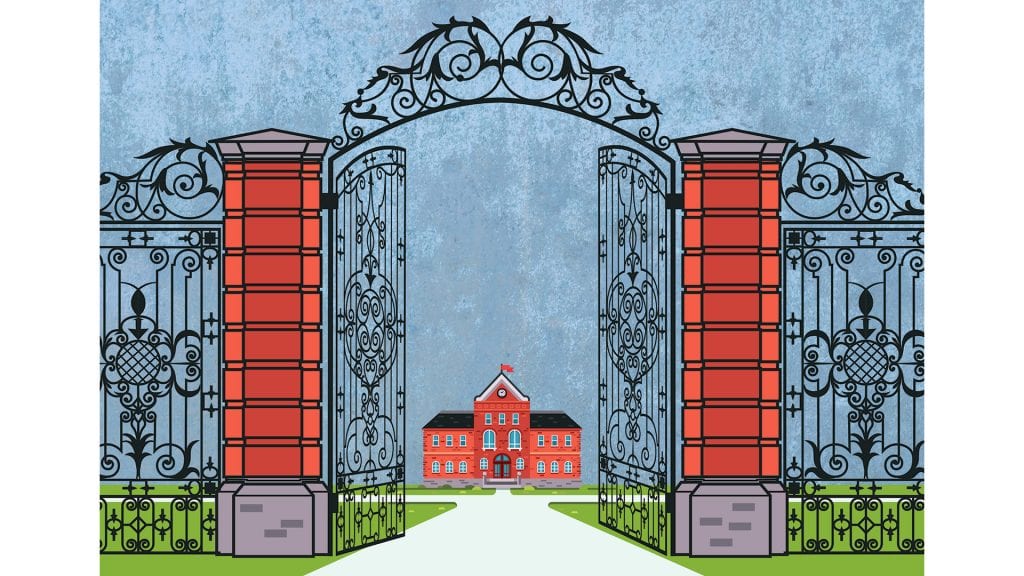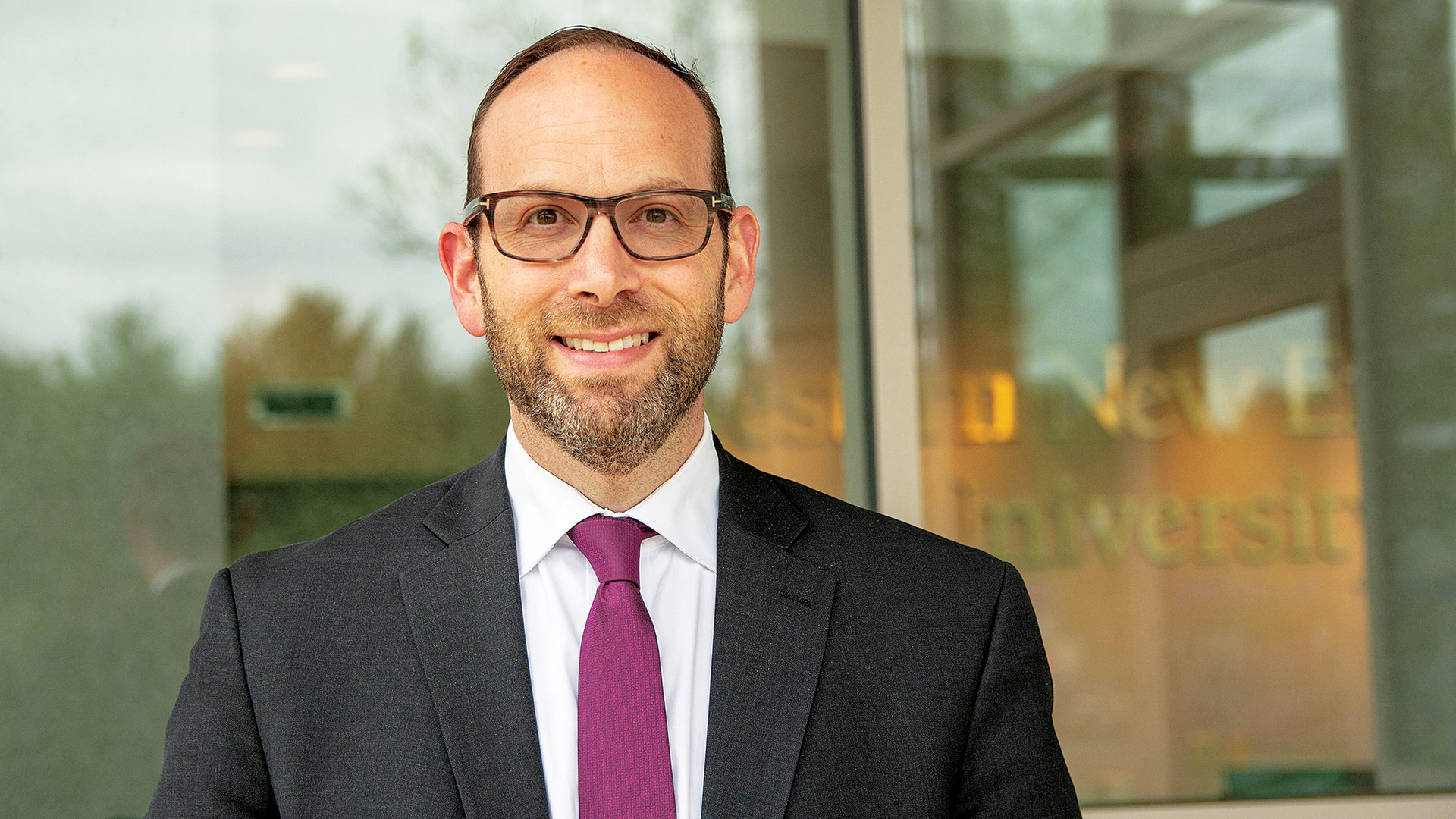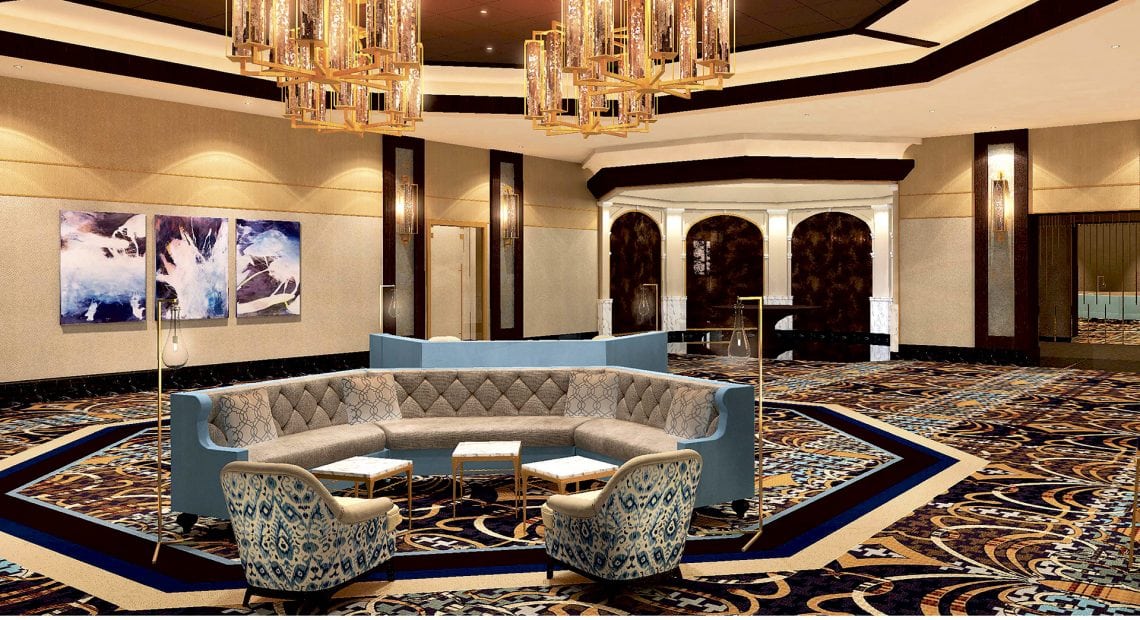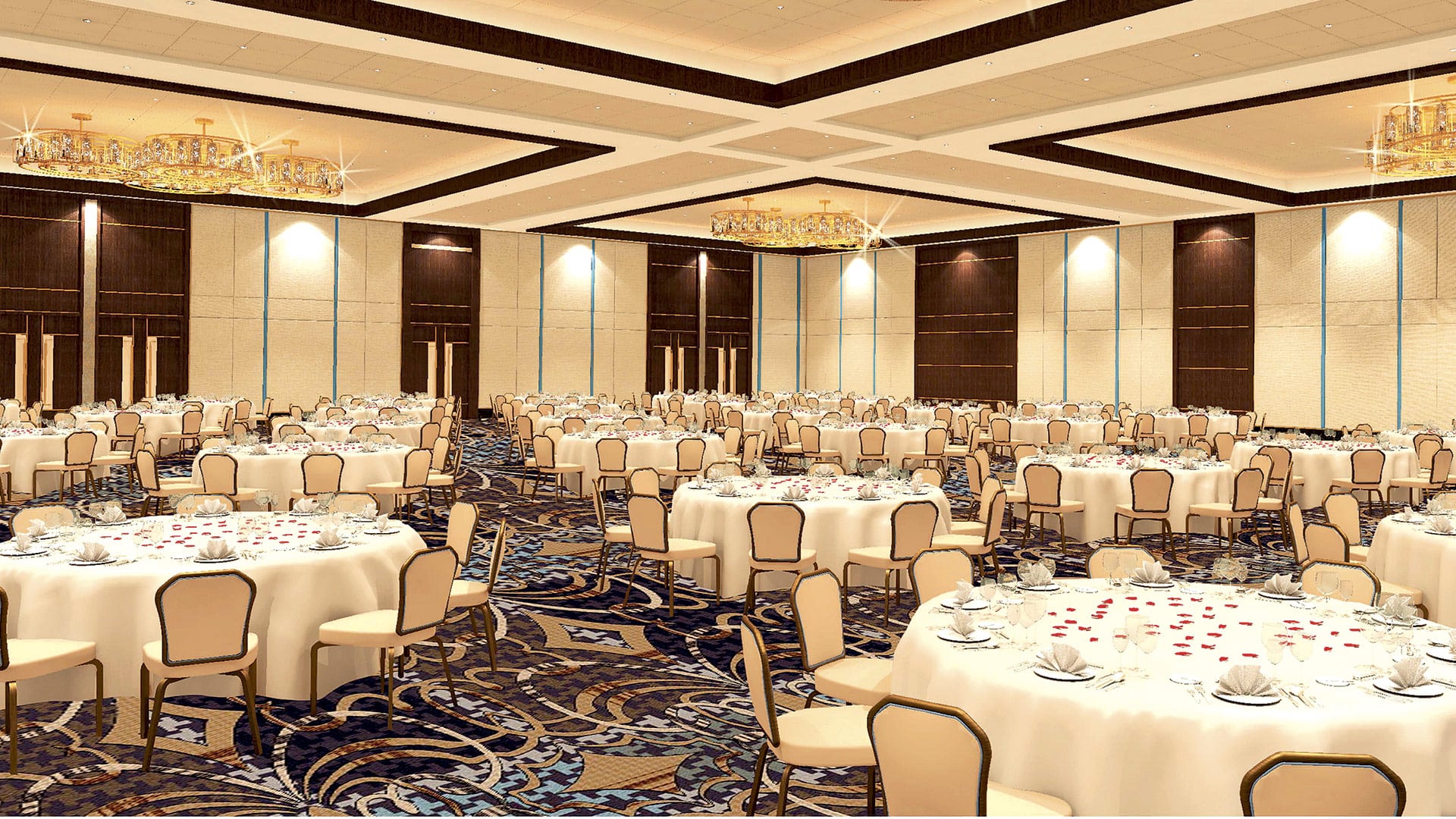Entrance Exam

Come back to campus, or don’t — either way, you’ll learn.
Just don’t expect campus life to be anything like you’re used to.
That’s essentially the message from UMass Amherst, by far the region’s largest of roughly 20 colleges and universities grappling with how to welcome students back to campus this fall — or setting them up for online instruction, as the case may be. Or, in some cases, both.
“We heard loud and clear from our student body that, even if they’re taking courses remotely, they would really like to be on campus or around campus,” Chancellor Kumble Subbaswamy said during a recent conference call discussing the university’s fall plans.
In a nutshell, the vast majority of students will not be required to return to Amherst, with most courses offered remotely. But they may return — for residence-hall life and in-person instruction — if they’d like.
“Our communication will be very explicit about what the campus might look like and what our expectations are, and what we will hold all of our students responsible for,” he continued. “With all of that knowledge, if they still want to come to campus and live in campus housing, they’re most welcome to. And whether they come back to campus or not, we will really provide a rich and rewarding academic experience with not only remote courses but also advising and lots of peer-to-peer interactions and faculty-to-student interactions and so forth.”
In other words, Subbaswamy noted, “we’re prepared to serve our community to the best possible extent in terms of providing all the college experience can under these different circumstances because of the pandemic. That’s the bottom line.”

Bryan Gross says WNEU’s mission prioritizes on-campus education, but the university is ready to pivot if the pandemic worsens.
That said, life in the residence halls will be altered to include pedestrian-flow guidelines, restrictions on group gatherings, and limited face-to-face contact. No guests will be allowed in residence halls, at least at first. Most student services will be offered remotely. The Recreation Center will be open — with limits and restrictions placed on activities.
In short, things have changed since COVID-19 arrived in Massachusetts. Leaders at the region’s higher-education institutions have been meeting since … well, pretty much since they sent students home in mid-March, to hash out what classrooms and the campus experience will look like come late August, when the fall semester begins for most.
“We need to make sure we’re providing them with some sense of security, and do everything that we can to make this experience one where they are able to continue their studies and get to graduation.”
None of the schools’ plans are exactly the same, with some emphasizing on-campus instruction, some — including most of the community colleges — opting for an online-heavy approach, and others landing somewhere in between, with students choosing between in-person, online, and hybrid programs (see box on page 19).
Western New England University, touting its ample space and small classes, has decided to conduct the vast majority of classes fully on-campus this fall, while a small number of courses will be delivered in a hybrid or online format.
“We keep coming back to discussions regarding our mission, which is to provide a highly personalized educational experience inside and outside class,” said Bryan Gross, vice president for Enrollment Management and Marketing. “For the faculty and staff working on this plan, any time we get stuck on details, we come back to that mission.”
Students will be required to wear a mask or face shield, practice social distancing, and maintain a high standard of hygiene. In addition, plexiglass barriers will be installed throughout campus, including classrooms. Most buildings will be one-directional to minimize hallway contact, buildings will be cleaned more frequently, and residence halls will be limited to single and double rooming options, among other measures.
Walter Breau
“We learned a lot in the spring when we had to go online — we understand what we did well and what we can do better. If a second surge happens and everyone decides to move online, the Elms flex model allows that to happen.”
“We watch the news every day,” Gross told BusinessWest. “Things are constantly changing in terms of safety, and we have to follow state and federal regulations, but based on the information we currently have, we feel confident our plan is doable — that it meets our values and protects the health and safety of students. But if things change, we also have to be open and honest, and we are willing and able to change.”
That’s why WNEU, like many colleges and universities, has actually been planning for three different scenarios — most students on campus, online learning, and a hybrid of the two.
“The majority of our families are ready for their children to be on campus and have the campus experience,” he added, “They trust our Health Services and know, if it’s ever not safe to be here, we’re going to make the right decision in the best interest of our students.”
That’s the COVID-19 world colleges and universities must grapple with — with every day bringing changing news and more moving targets. As enrollment planning goes, it’s unprecedented, at least within living memory. And students aren’t the only ones who will be learning something.
Course Corrections
At Elms College, classes will be taught this fall in a hybrid, flexible model that gives students the option of attending sessions in the classroom, online, or both. Students can move between the options based on their personal preferences, while international and non-local students will be able to continue their coursework from afar.
“We know some students are high-risk or living with someone high-risk and don’t feel comfortable being in a classroom, but we also know students want an in-person experience,” said Walter Breau, vice president of Academic Affairs. “So they can choose when to be in the classroom.”
The usual mix of masks, distancing, and plexiglass will be in play, and on-campus students will be expected to monitor and record any COVID-like symptoms they might have. As is the case at other campuses welcoming students this fall, any positive symptoms must be reported to the Health Center for consultation, and the college will have a separate living space for any student in need of quarantine.
Fall 2020 Plans … for Now
Leaders at 20 area colleges and universities continue to discuss plans for how academic programs will be delivered fall. Those plans might change, and even schools planning on a mostly on-campus experience will likely offer some programs remotely. Here are the latest plans, grouped by categories that may not capture all the nuances of each plan; readers are encouraged to visit the schools’ specific websites for more information.
• All courses delivered online, but students have option of attending in person: UMass Amherst.
• All online, with students in some programs (such as healthcare and culinary arts) on campus part of the time: Asnuntuck Community College, Cambridge College, Greenfield Community College, Holyoke Community College, Springfield Technical Community College.
• Blend of on-campus, online, and hybrid instruction: Bay Path University, Berkshire Community College, Elms College, Mount Holyoke College, Springfield College, Westfield State University, Williams College. American International College is discussing this model as well.
• Blend of on-campus and online instruction with students on campus for either fall or spring: Amherst College, Smith College.
• Mostly on-campus instruction: Bard’s College at Simon’s Rock, Massachusetts College of Liberal Arts, Hampshire College, Western New England University.
“Safety is our number-one priority,” Breau told BusinessWest. “We know students want to come back. How to keep them safe while doing that has been the prime goal of reopening. Our task force made sure safety was always number one on the list.”
To that end, students will need to review safety-training materials when they return to campus. “It’s going to be a team-based effort. It’s not just administrators, faculty, and staff, but students have to be a part of the process as well. We’ll certainly rely on them to help us stay safe.”
There’s a safety net built into the ‘HyFlex’ model as well, Breau noted, in that it wouldn’t be difficult to transfer all learning online if the region’s infection rates soar.
“We learned a lot in the spring when we had to go online — we understand what we did well and what we can do better. If a second surge happens and everyone decides to move online, the Elms flex model allows that to happen; it’s built into the syllabus and the way instructors plan the courses.”
American International College is also seriously considering a HyFlex model, and plans to announce its detailed fall strategy by the end of July, said Nicolle Cestero, chief of staff, senior vice president for Human Relations, and Title IX coordinator. She said a group of campus leaders has been meeting for several months and are doing all they can to give students an on-campus option.
With more than half of its undergraduate student body first-generation college students and more than 50% also Pell Grant-eligible — meaning they come from low-income families — AIC doesn’t want to add additional challenges to their lives, she noted.
“We need to make sure we’re providing them with some sense of security, and do everything that we can to make this experience one where they are able to continue their studies and get to graduation,” Cestero said, noting that the HyFlex option is an ideal model in that it allows students to access their education in a way that best serves their needs in this most difficult year.
Plus, there’s value in the on-campus experience that can’t be replicated remotely, she added. “Maybe your roommate becomes your best friend for life. Or you’re participating in a conversation that you never would have participated in — on race or gender or power and privilege, or whatever it is — and you don’t necessarily get to do that if you’re not on campus. You develop so much in these years — it’s your first time away from home, and you’re teaching yourself how to do things, how to manage your own time and finances, all that stuff.”
In a letter to the Springfield College family, President Mary-Beth Cooper detailed a blend of in-person, remote, and hybrid instruction, with all learning moving online after Thanksgiving. But she emphasized that new safety measures — from masks and distancing to a contact-tracing program and isolation spaces — are key to making the plan work.
“Successfully remaining on campus throughout the fall semester will depend on the degree to which we, as a community, work together to reduce the possibility of the virus appearing on campus and, if it does, responding quickly to limit its spread,” she explained.
Brandi Hephner LeBlanc, vice chancellor for Student Affairs at UMass Amherst, noted that the university will distribute a student agreement that details the testing and symptom self-monitoring they’re asked to do, as well as the need to carry hand sanitizer and face coverings when moving about, among other safety measures.
“We’re really asking them to be a responsible community member, first and foremost, and to be a part of the bystander intervention,” she said. “When you see someone without a mask, remind them.”
And if students don’t comply?
“There is going to be what I would term an escalation of intervention,” she explained. “We’ll have public-health ambassadors on campus that will help remind folks, and there will be a lot of communication to find out if there’s a problem. This is not going to be an immediate referral to the Conduct Office, unless it’s something so egregious that that’s necessary. But this is something that takes a lot of reminding to manage the behavior. And we’re prepared to do that.”
Catalog of Options
A few institutions across the region have emphasized the value of returning as much activity to campus as possible. Massachusetts College of Liberal Arts President James Birge cited recent survey data collected from 10,000 high-school and college students; 78% of respondents find the experience of in-class learning this fall appealing, while one-third would transfer out of their institution if the college shifted to online course delivery.

Nicolle Cestero says the value of the campus experience shouldn’t be minimized, but a hybrid flex model might be the smartest way to go this fall.
“We know the residential and in-person class experience is important to our students, students at state universities across the Commonwealth, and nationally,” Birge said, which is why MCLA is moving ahead with an ambitious on-campus approach. “Although returning to campus this fall presents some risk, we will work to make the campus experience as safe as possible for everyone. Of course, this means we will have to significantly shift our way of learning, teaching, and working.”
Other campuses, like Amherst College and Smith College, are looking at having roughly half the students on campus for the fall, to better achieve physical distancing, with the ones sent home for remote learning having on-campus priority for the spring.
“We know that any scenario short of bringing everyone to campus will be bitterly disappointing to those who will have to wait until the spring,” Amherst College President Biddy Martin wrote in a letter to students and families. “With this structure, we can provide the opportunity for every student who wishes to be on campus to spend at least one semester here and, if things go well, both semesters for a large number of those students.”
Meanwhile, Springfield Technical Community College is among a handful of area institutions — several community colleges among them — to continue with an online model this fall, though some programs in STCC’s School of Health and Patient Simulation will include low-density, on-campus labs adhering to social-distancing, PPE, and sanitizing protocols.
“STCC has no intention of becoming a fully online institution,” said Geraldine de Berly, vice president of Academic Affairs. “The pivot to online is driven by a health pandemic. COVID-19 has forced the college to adjust, and we do hope in the future to return to the robust utilization of campus facilities.”
In some instances, STCC will use synchronous teaching strategies, with students gathering at a specific time through videoconferencing. But most of the classes will be taught using an asynchronous approach, which gives students flexibility to set their own hours to complete their studies and assignments.
“Many of our students have childcare obligations, work commitments, and a host of other complicated circumstances,” President John Cook said. “We know that our students benefit from having flexibility in their classwork, and online is yet another way STCC lives its mission of ensuring access to higher education.”
Flexibility, in many ways, has become a key word in the region’s higher-education sector, which suddenly offers a wide array of learning models heading into perhaps the most unusual fall semester for American students in generations.
What these schools have in common is an emphasis on safety, and on making sure students know their own responsibilities in keeping COVID-19 infections low — and keeping the campus experience alive, in whatever curtailed form it might take.
WNEU’s Gross is confident it’s a message they will understand.
“You’re not doing it for yourself, but for other people. And that’s such a positive message we can send,” he told BusinessWest. “That’s why human beings are on this earth, to care for one another and take actions that help the community. We hope that value is something that’s embraced by our students. It’s an amazing opportunity to learn and grow and take actions to help others.”
Joseph Bednar can be reached at [email protected]










